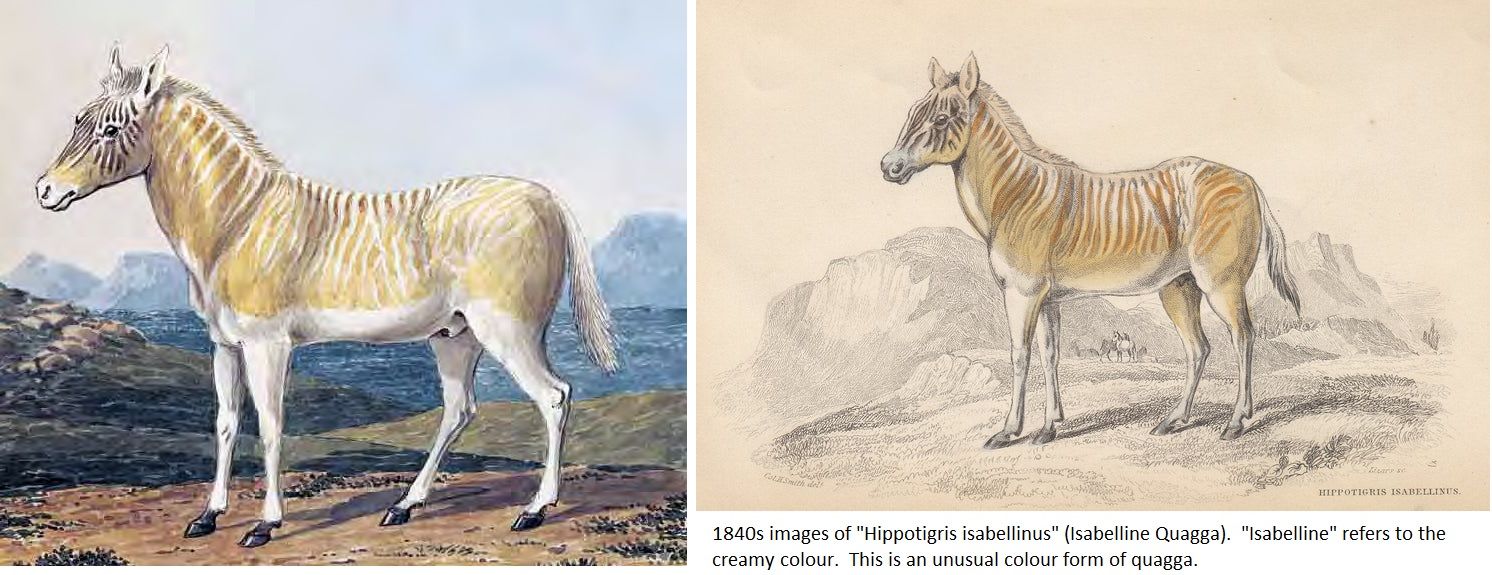
ZEBRA MUTATIONS
This "isabelline" (cream) quagga was an unusually pale animal where the black stripes have been transformed to rust red on a cream background.

WHITE VARIETY OF THE ZEBRA.(The Field, 26th May 1900)
Owing to the courtesy or Mr Rowland Ward and the permission of Lieutenant Bellew, I have the pleasure of illustrating by a most careful drawing the sin of a variety of the zebra shot in Somaliland, which is one of a unique character [. . . ] It will be seen that the characteristic stripes are only shown in very full intensity on the neck and shoulders. Those on the body and the legs are shadow stripes, but they are sufficiently indicates to admit of their being traced. This singular animal has been long known to exist, but always evaded capture. Lieut. Bellew, 16th Lancers, hearing of it, sought and obtained it after a chase of three days. It appears to me more nearly allied to the Burchell than to the other species, as it has no indication of the gridiron marking of the mountain zebra, or the close stripes of the Grevy. – W. B. TEGETMEIER
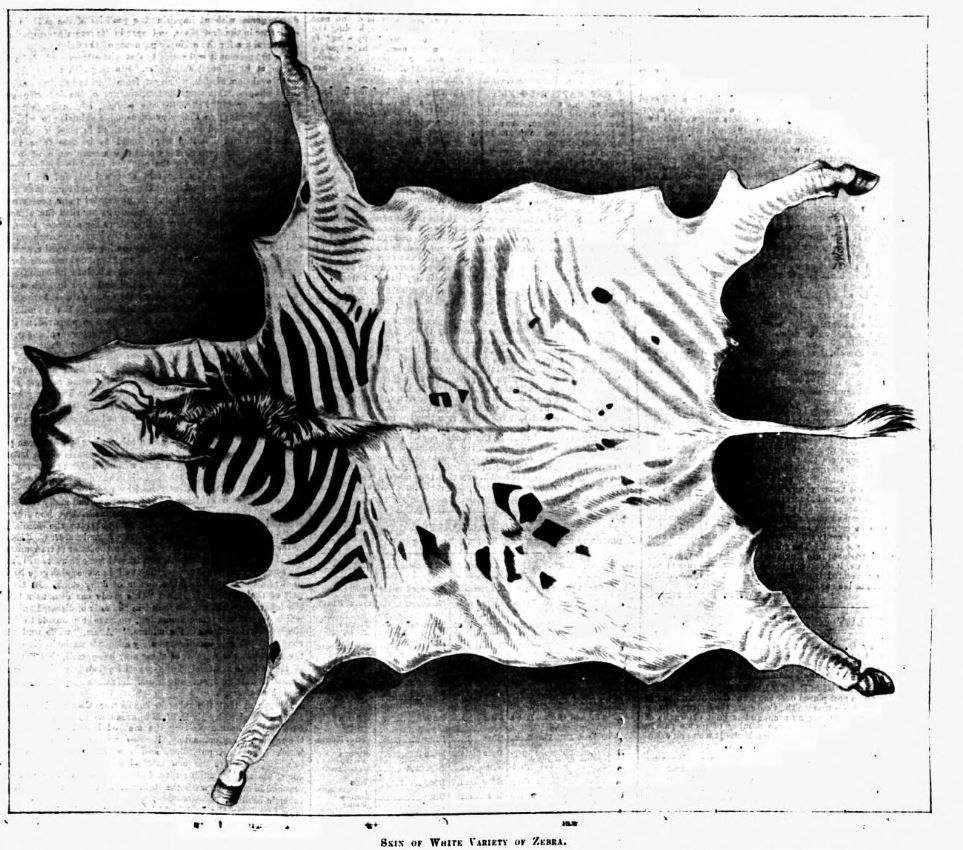
THE WHITE ZEBRA (The Field, 1st September 1900)
IN THE FIELD of May 26 1 had the opportunity of producing an engraving of the skin of an exceedingly interesting variety of zebra, then in the possession of Mr Rowland Ward, which had been shot by Capt. (then Lieut.) Bellew, of the 16th Lancers. The particulars which I reproduced were rather scanty, but they have been supplemented by a very interesting letter which I have received from Capt. Bellew, who writes to me on June 31, from the 3rd Cavalry Brigade, now in South Africa, giving me some interesting and valuable particulars about the specimen. Capt. Bellew informs me that it was shot on the plains in British East Africa, and was at that time running with a herd of Grevy's zebra. He writes as follows:
"I have just had an opportunity of seeing your article in the “Field” on the white zebra skin that Mr Rowland Ward has of mine. I wish I had known you were going to write, as I could have given you more information and some interesting particulars about it. In the first place, it was shot on the plains in British East Africa, and was at the time running with what 1 believe were a herd of Grevy's zebra. They answered very much to A. Neumann's description of the species. "My specimen was considerably smaller than the others, and was regularly attended on by them, some six never leaving it for an instant ; so much so that it took me five days' hard work to secure it. Amongst other peculiarities of this specimen, the anus and scrotum were parti-coloured, not pink as might be expected, and the iris of the eye was a curious pale yellow. In skinning it, which I did very carefully, I came to the concision that the animal was a "rigg,” as I could only find one testicle, though I looked most thoroughly. I took several photos of it from various points as soon I could, but it was just getting dark, and, greatly to my disappointment, none were successful, and I was too far from camp to leave it till next day.
"Among the herd in which this white one ran was another very curious specimen, and I had ample time to examine them all through glasses during the time I was after them. It was slightly smaller than the rest (this may have been due to youth), but both the dark bars and the light spaces between were about double as wide as usual. I tried my best to get it too, but, after shooting the white one, the herd was quite unapproachable ; I could not even keep it in sight, and never found it again. Amongst the zebra in that part of the world there appear to be two varieties, but resembling each other much that the difference can only be detected on close examination of the skins after death. I only shot a couple of others myself, but saw some dozens of skins that came from the same district, and the difference lay in some of them having a very faint shadowy bar between the ordinary dark ones, this bring most noticeable on the hindquarters and hind legs.
"I have read your book on mule breeding, and take the greatest interest in the future possibilities of the zebra. It is a most fascinating subject.''
The information contained in this letter from Capt. Bellew is so interesting and valuable that I have much pleasure in asking for its publication. The white zebra certainly does not appear to be a variety of the larger Grevy's zebra, but a variation from the Burchell. Whether these two species ever intermix, and, if so, whether the produce is a fertile animal or a sterile hybrid, we do not know. All zoological collections of living animals that exist appear to be simply show shops, the invaluable opportunities for determining important physiological questions and the practical improvement of our domesticated animals being ignored by the committees who manage these exhibitions. Some 50,000 to 100,000 mules have been imported into Africa during the present war. The possibility of producing on the spot a useful zebra and horse hybrid has apparently never entered into the minds of the authorities, and although we have recently had three distinct species of zebra in our own zoological collection, both practical and physiological investigations are left to be carried out by private individuals, as has been so energetically done by Professor Ewart. The practical utilisation of these extraordinary advantages is, as far as I am aware, ignored by the directors of all zoological vivaria. – W.B. TEGETMEIER
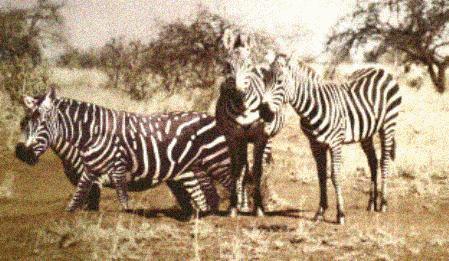 This photo from an old photo album was apparently taken in Tsavo (now a National Park) in Kenya. It shows 3 normal zebra and one with white stripes and blotches on a black background (the original photo had deteriorated). |
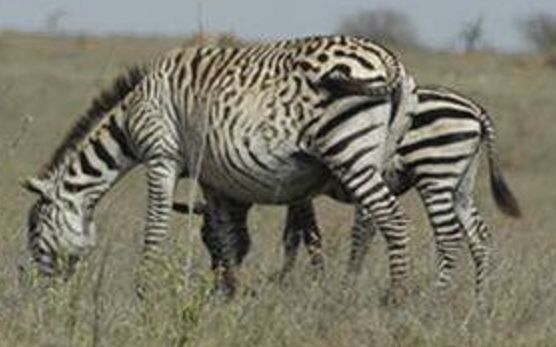 . |
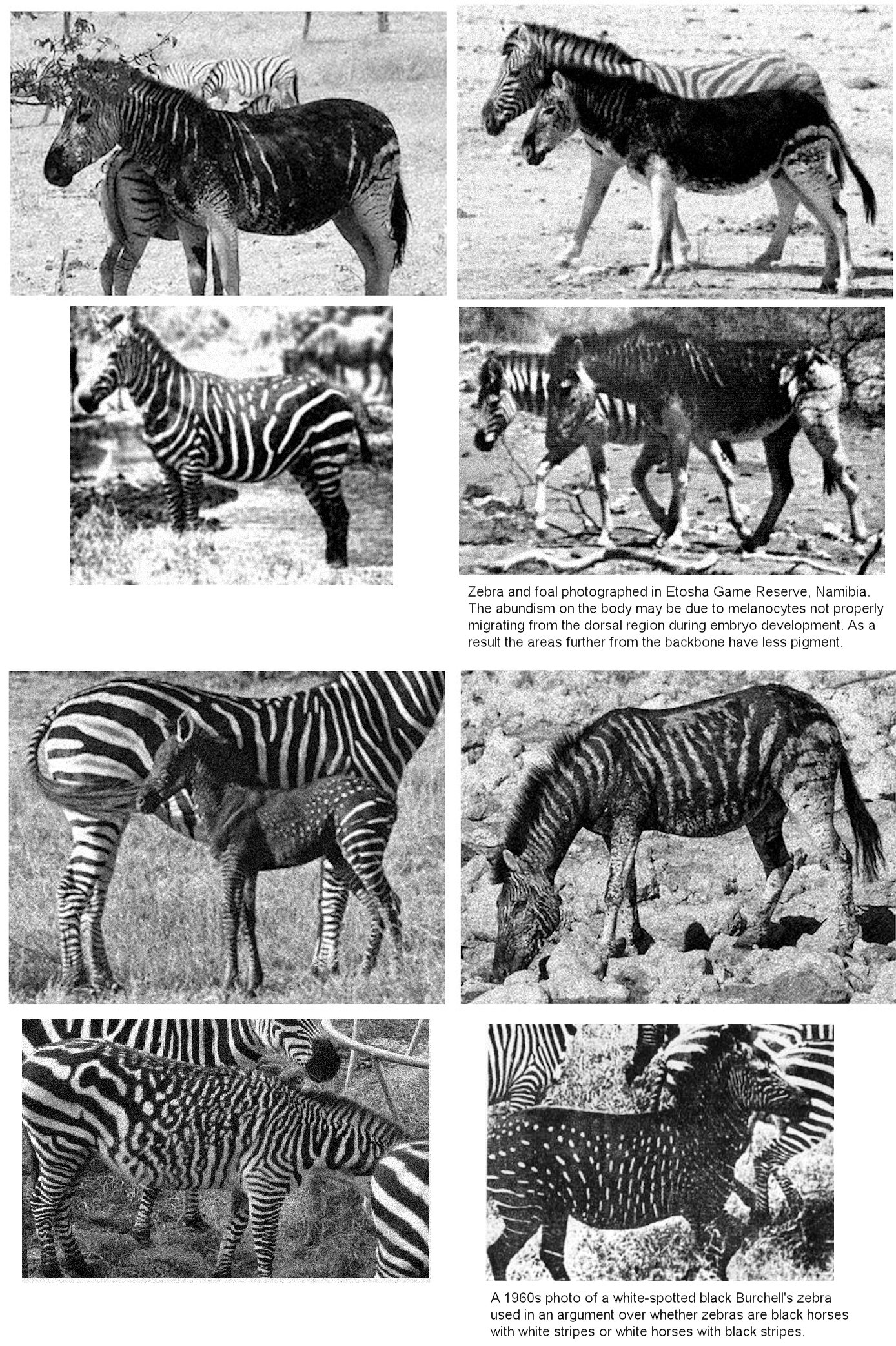
It is unusual for mutant zebras to survive for long as their distinctive coloration makes them stand out from the herd and they are a target for lions. | |
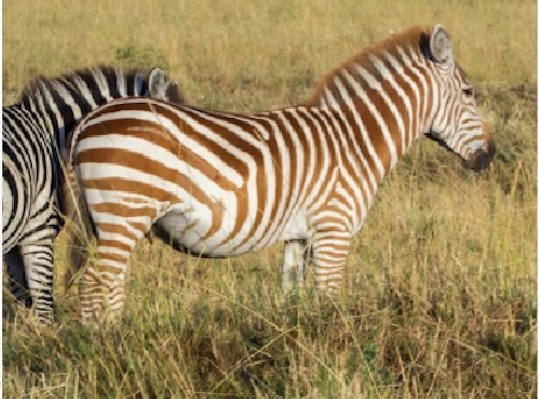 Sometimes the stripes appear washed out. Albino zebras are white with pale golden stripes or varying intensity.
|
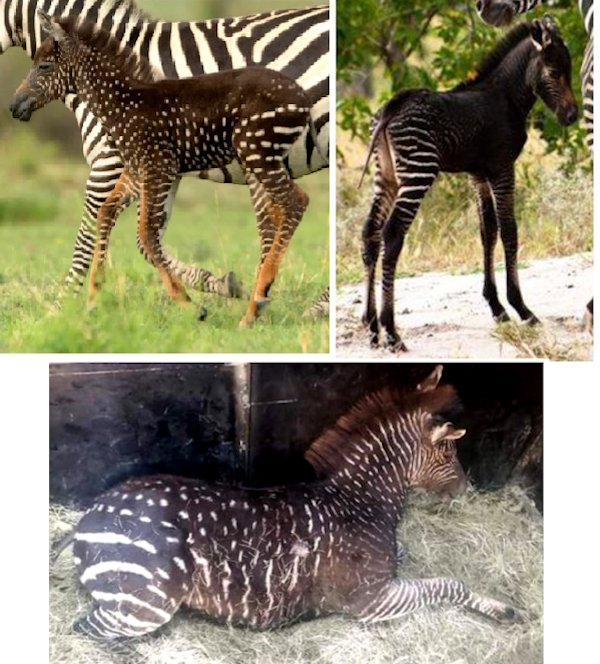 |
In March 2004, a white zebra was born in Nairobi's national park in Kenya. It was discovered when local Masaai cattle herders reported seeing a loose white calf in the park. Its gender is unknown, but it is healthy. The good news is that zebra don't discriminate against stripeless zebra and it is accepted into the herd. The bad news is that a white zebra is conspicuous and, therefore, an obvious target for predators. The foal pictured above probably didn't have a long life due to its distinctive coloration. The cause of white zebras is a form of albinism. True albinism results in blue or pink eyes. A condition called leucism (responsible for white lions) results in normally coloured eyes and sepia tones on white background.
De Seve's depiction of a female zebra in 1766 shows an oddly marked animal where only part of the body was striped. Was it drawn from description or from life?
